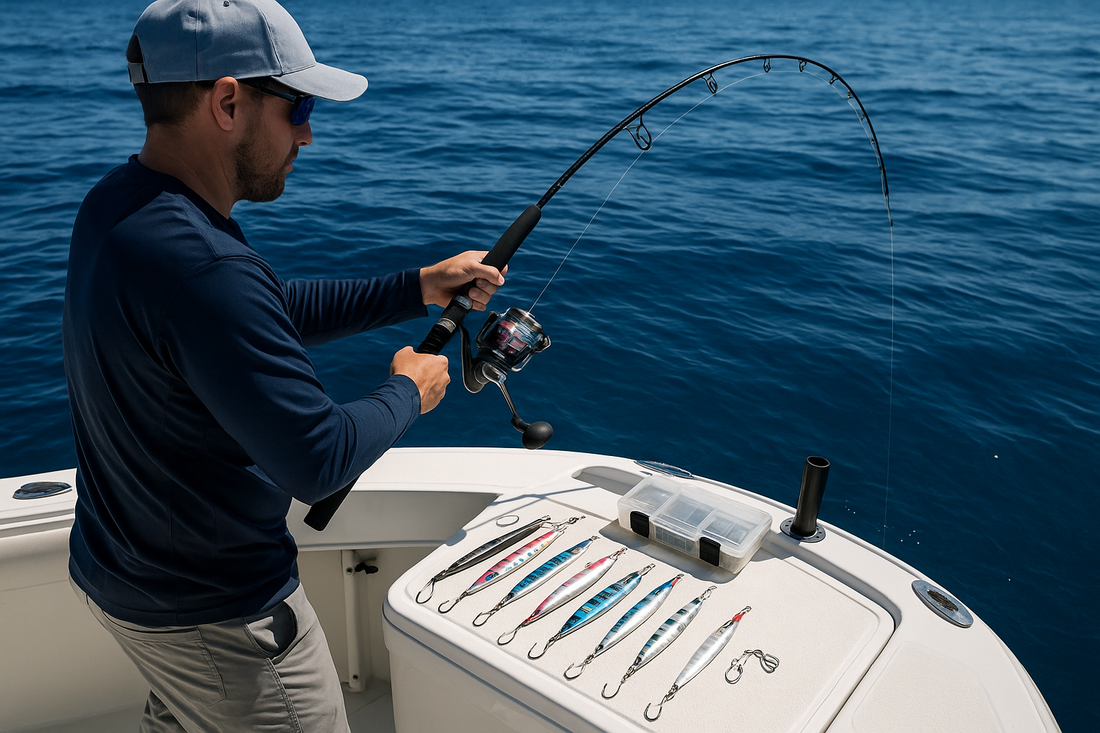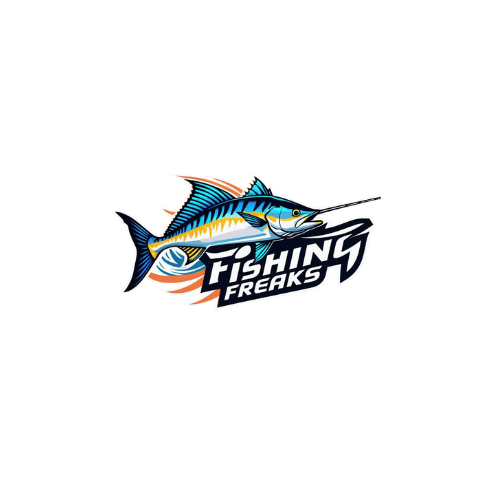
Matching Jigging Style to the Right Gear: A Complete Guide for Boat Anglers
Share
When it comes to boat jigging, your success depends not only on technique but also on how well your gear matches your jigging style. Whether you're targeting deepwater predators with fast-falling jigs or enticing slow-moving giants with a fluttering presentation, choosing the right rod, reel, and tackle makes all the difference. This guide will break down everything you need to know about jigging styles, gear matching, and how to make the best choice based on your target species, depth, and fishing conditions.
Understanding Jigging Styles: Slow Jigging vs. Fast Jigging
Fast Jigging (High-Speed Jigging)
Fast jigging involves aggressively jerking a metal jig through the water column to imitate a fleeing baitfish. It's a physically demanding technique designed to trigger reaction strikes from fast-swimming predators like tuna, amberjack, kingfish, and GT.
Key Characteristics:
- Quick, vertical rod lifts combined with fast reel retrieval.
- Heavy jigs (120g–500g) designed to sink quickly and cut through current.
- Best in deeper waters (40m–150m+) or when fish are highly active.
Ideal Targets: Tuna, Amberjack, Kingfish, GT, Barracuda
Slow Jigging (Slow Pitch Jigging)
Slow jigging is a more technical and rhythmic technique. It uses center-balanced jigs that flutter and fall slowly, mimicking a dying or wounded baitfish. Rather than relying on speed, slow jigging focuses on presentation and movement during the fall.
Key Characteristics:
- Gentle rod lifts and controlled slack to allow flutter action.
- Jigs typically range from 80g to 300g depending on depth and current.
- Effective in deeper waters (50m–200m), especially when fish are less active.
Ideal Targets: Grouper, Snapper, Amberjack, Halibut, Cod
Jigging by Gear Class: Light, Medium, and Heavy
Matching your gear not just to the jigging style but also to the size of fish and the water depth is crucial. Here's how to break it down:
Light Jigging (40g–100g)
Best For: Shallow water (20m–60m), reef species, and smaller pelagics.
Rod:
- PE1–PE2 rating
- Length: 6'0"–6'6"
- Moderate-fast action for sensitivity and control
Reel:
- Spinning or baitcasting reel size 3000–4000
- Max drag: 7–10kg
- High-speed gear ratio (6.0:1 or higher)
Line Setup:
- PE1–PE1.5 braid
- 20–30lb fluorocarbon or mono leader
Medium Jigging (100g–250g)
Best For: Mid-depth jigging (50m–120m), larger reef fish, school-sized tuna or amberjack.
Rod:
- PE2–PE4 rating
- Length: 5'6"–6'2"
- Medium-fast action for powerful lifts
Reel:
- Spinning reel size 5000–8000 or equivalent overhead jigging reel
- Max drag: 10–15kg
- Durable gearing with good torque (gear ratio ~5.7:1)
Line Setup:
- PE2–PE3 braid
- 40–60lb leader
Heavy Jigging (250g–500g)
Best For: Deep water (100m+), strong current, large predators like dogtooth tuna, big amberjack, or GT.
Rod:
- PE4–PE6 rating
- Length: 5'0"–5'8"
- Extra-strong backbone with sensitive tip
Reel:
- Overhead or spinning reel size 8000–10000+
- Max drag: 15–25kg
- Lower gear ratio preferred (4.9:1 to 5.5:1) for torque under heavy load
Line Setup:
- PE4–PE6 braid
- 60–100lb leader

Jig Types and Their Role
The shape and balance of your jig must also match your technique:
- Fast Jigging Jigs: Long, slim profile; falls quickly and reacts well to fast rod action.
- Slow Pitch Jigs: Shorter, center-balanced; flutters and spirals on the drop, staying in the strike zone longer.
Choose jig weights based on:
- Water depth (heavier for deeper)
- Current strength (heavier for stronger current)
- Target species behavior
Final Tips for Matching Gear
1. Don’t mismatch your rod and reel rating — using a PE2 reel on a PE4 rod will limit performance.
2. Upgrade your split rings and solid rings for larger species.
3. Assist hooks should match jig weight and target mouth size.
4. Fluorocarbon leaders are better for abrasion resistance around rocks or structure.
5. Always balance jig weight with rod rating — overloading can break rods or ruin action.
Conclusion
Choosing the right jigging gear is all about balance: between jigging style, depth, and your target species. Whether you're chasing reef dwellers with slow fluttering jigs or firing down metal bullets for tuna in deep blue water, matching your gear to your jigging technique ensures not just efficiency—but results.
Get your setup right, and you'll feel the difference on every drop.

